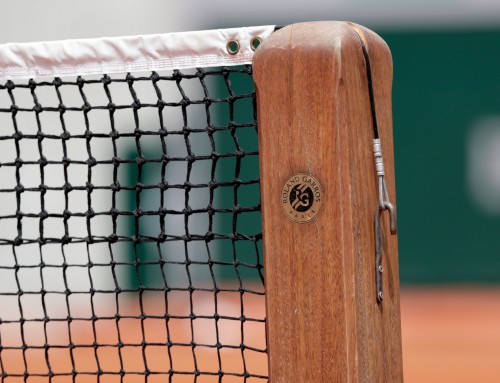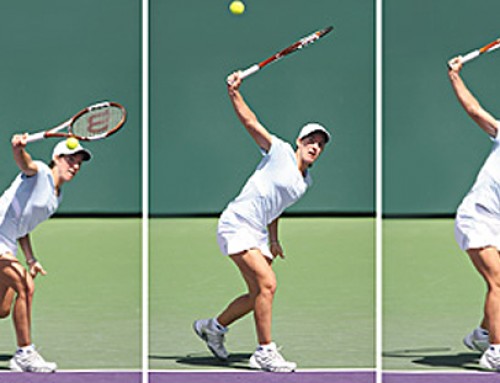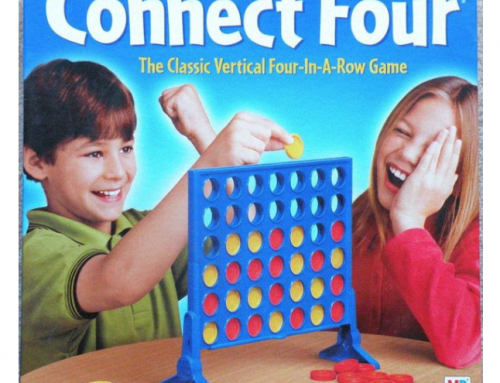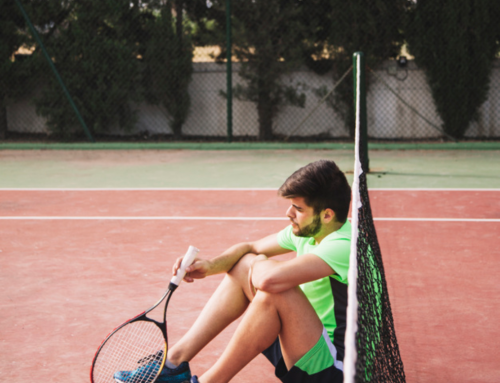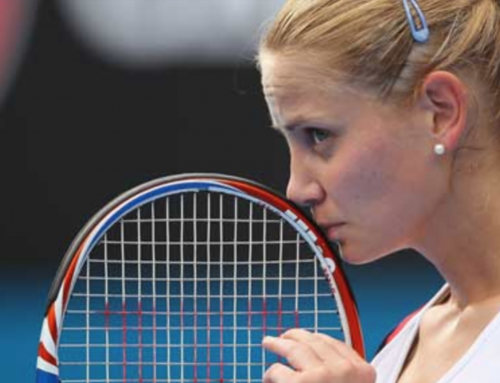Want to level up your game FAST?
This message (and Part 1) is going to help you do that by laying out the most common misconceptions, false beliefs, and ineffective patterns tennis players of all levels fall into…
…so you can avoid them and focus on what’s most important each and every time you’re on the court!
Even a small tweak in your understanding of these elements will change the trajectory of your improvement for decades to come, which makes a huge difference in where you ultimately end up.
Part 1 covered the first three most common mistakes, check it out here if you missed it.
===================================
Mistake 4: Decelerate Instead of Accelerate
===================================
Players with a poor understanding of the game link safety with swing speed…
Their assumption is: slow = safe and fast = risky.
As a result whenever they come up on a critical part of a set, game, or point, a situation where they absolutely, positive must make a shot, they decelerate to make sure the ball goes into play.
The bottom line: the most important shots they hit are also their least competitive!
High level players have completely broken away from that mental paradigm because they understand how shaping tennis shots work.
They have a completely different formula in their heads:
More acceleration = more spin = more safety
The above equation only works if you’ve learned how to swing AWAY from your target instead of towards it…
You see, when players first learn how to play they pick a spot they want the ball to go and then swing their racquet completely in that direction.
Makes sense on the surface, right?
Unfortunately, as long as your swing path is locked in on that direct, straight path you can never, ever hit any kind of significant topspin, which is the magical variable that allows for big racquet head speed AND big margin for error at the same time.
And so, low level players are constantly restricting their swing speed on critical points, restricting themselves in competitiveness, level, and improvement, while high level players actually accelerate more when it really matters, simply in a different direction to create spin.
=================================
Mistake 5: Tension Instead of Relaxation
=================================
This is a very close cousin to #4, but they aren’t always directly related.
Physical tightness creeps into the bodies of tennis players for two main reasons:
They’re nervous and anxious mentally.
They’re trying hard to hit the ball (acceleration).
Tightness due to nerves happens to ALL of us, regardless of level. It’s a universal tennis experience during competition, simply making us human.
Don’t get me wrong, it’s something you can absolutely improve, but as long as you play important matches that matter to you it won’t ever go away completely.
On the other hand, low level players get more and more tight the harder they try to swing, whereas high level players actually LOOSEN when they really want to go big on a particular shot.
How is that possible??
It all comes down to the primary power source in each swing…
Beginner and intermediate players use their shoulder, arm, wrist and hand to propel the racquet through contact, which means an especially high effort swing requires those muscles to aggressively contract.
On the other hand, high level players use their legs, hips, core, and torso to power their shots, which means everything from the shoulder down can be loose and relaxed!
The harder a beginner tries to hit a tennis ball the more rigid, jerky, and tense their swing gets.
Advanced players are exactly the opposite.
====================================
Mistake 6: Feet Move After Instead of Before
====================================
Beginner tennis players are master “chasers”. They’re trying to catch up to the ball and track it down shot after shot, constantly behind in the rally.
Why?
Because their response to the ball doesn’t happen until AFTER it’s hit by their opponent.
This is one of my favorite things to show to our students in slow motion on one of our iPads.
I’ll stand behind them and shoot some footage of a rally, then walk up and show them how they reacted to a shot their partner just hit.
Zooming in on their feet you can see the ball traveling towards the player on the other side of the net…..my student’s feet are flat on the ground….
…I inch the video forward and their partner is taking their racquet back to prepare. My student’s feet are flat on the ground.
…I inch the video forward some more to contact by the other play. My student’s feet are flat on the ground.
…I inch the video forward some more, the ball is now making its way towards my student. Their feet are STILL flat on the ground!
Finally, after what seems like an eternity, my student has read where the ball is going, and they physically respond by starting to move their feet in that direction.
Important: 80% of the players reading these words do what I just described.
They’re literally standing and watching as their partner or opponent prepares, swings, and hits the ball and they only activate their body once they see exactly where the shot is going.
The contrast between that and an advanced player is huge: they act BEFORE the ball is hit on the other side of the net.
They proactively activate their body and mind by widening their stance, loading their legs like springs so they’re ready to fire at maximum intensity, and getting their balance up on their toes so they can be as nimble as possible.
All of that occurs before they even know where the ball is going by using a split step. It happens without them even thinking about it because they’ve trained it over and over again.
Beginner and intermediate players know about the split step. They know what it is and why they’re supposed to do it. Unfortunately they haven’t trained it purposefully, so the knowledge goes to waste.
=================================
Mistake 7: Reactive Instead of Proactive
=================================
Again, a close cousin to the mistake before this one…
Another big reason why beginner and intermediate players tend to “chase” shot after shot is because they don’t put themselves in the best position to receive an opponent’s ball BEFORE they hit it.
After completing each swing they either stand there and admire their handiwork, gazing at the ball to see if it will land in or not…
…or they make a casual effort to get back to “the middle” before the next shot.
On the other hand, advanced players watch where their shot is going, but its for a completely different reason: they’re reading where their opponent will hit the next shot from so they can position themselves in the middle of what’s possible for them to target!
Completely different mindsets.
This is important: the middle of the baseline is NOT the middle of what your opponent could hit next….UNLESS they’re hitting from right in the middle of the baseline on their own side of the court!
High level players are working hard to put themselves in the geometrical center shot after shot, and they do so without hesitation.
That combined with the split step is why they get to SO many balls, and always appear to be in great balance.
====================
The Ball Is In Your Court
====================
Now, what are you going to do?
File this away under “useful information”, or take action and work hard to make a meaningful change to your game?
I hope the latter 🙂
If so, comment and simply say “I will!”. Commit to making yourself a better player and I’ll hold you accountable.
Thanks so much for reading, I hope Part 1 and Part 2 of this series was truly helpful.



